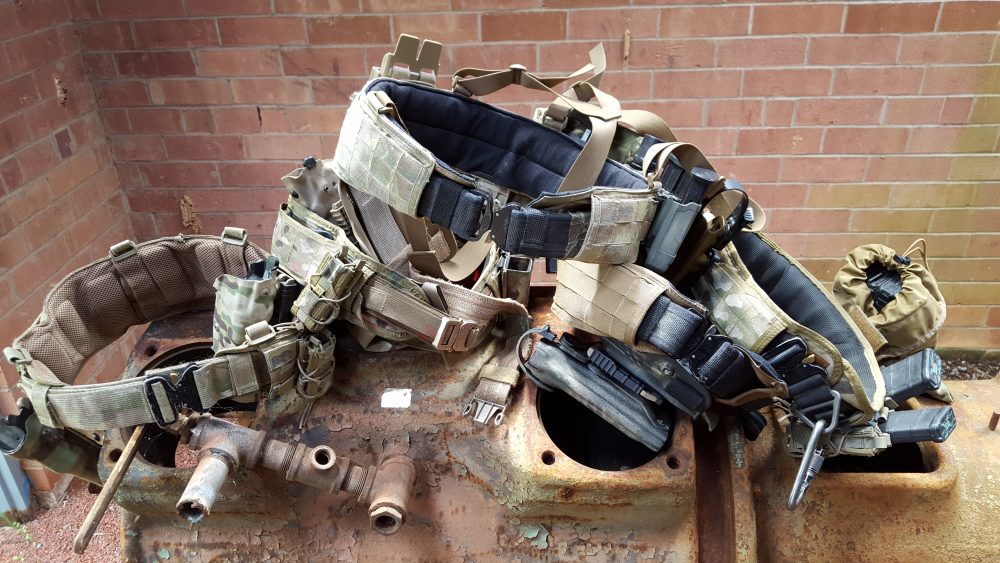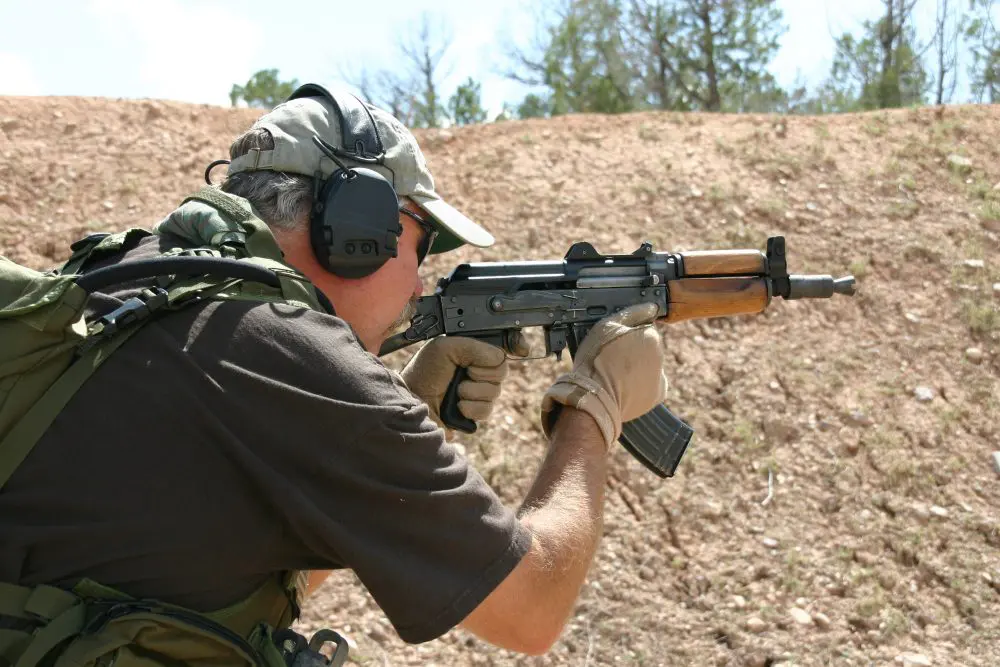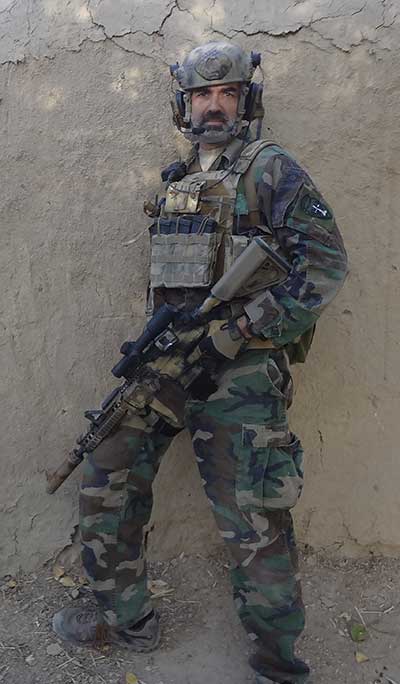
A lot of open-source information is available from the military on the M4 and its variants—the M4A1, MK18, and MK12 Special Purpose Rifle (SPR)—including pages upon pages of online photos and videos of troops downrange using various rifle and carbine set-ups. But some of the most detailed information on military rifles can actually be found from within a certain group of civilian gun enthusiasts.
Known as “Cloners,” these people often spare no expense transforming civilian ARs into exact clones of military Special Operations Peculiar Modification (SOPMOD) equipped rifles and carbines, getting even the smallest details correct. Through their extensive research, many of these Cloners have become subject-matter experts in the history and development of the M4 and the SOPMOD program.
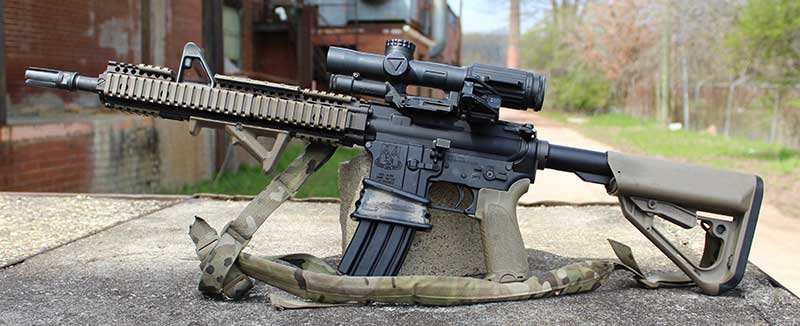
In fact, when I was writing the History of SOPMOD articles for S.W.A.T. (May and June 2017), I turned to Cloners to fill in some missing details. While I was able to cite a majority of SOPMOD history from memory, due to my 19 years with Special Forces, I did lack some information.
Looking at various Cloners’ rifle builds, I could tell from the level of detail and accuracy just how much some of these Cloners knew about military rifles and the SOPMOD program, and from them I was able to get the missing details I needed on certain SOPMOD items.
Table of Contents
WHY CLONE?
I admit that, before needing to do research, I thought it was silly for people to spend lots of money to build civilian legal clones of military guns. After all, why spend all that money on a copy of a military carbine when you can go out and buy a great race-ready 3-Gun AR? That to me, was much more practical for using in gun matches and target shooting.
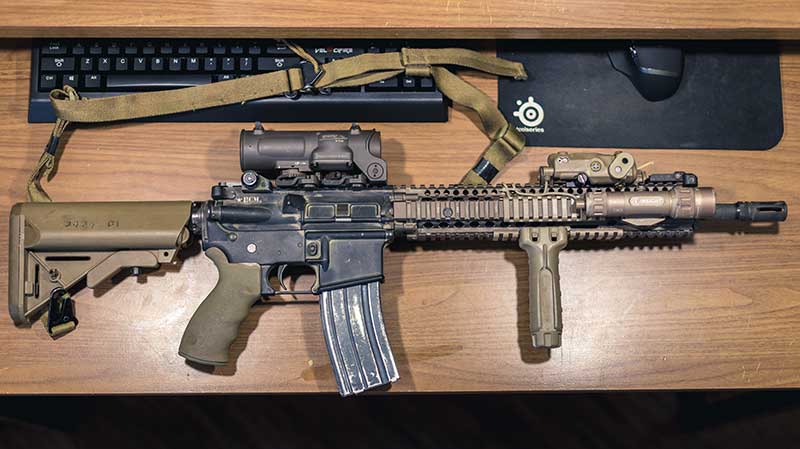
I changed my mind after I retired from active duty. After a few months of lurking around the various online clone forums and groups, I realized that these Cloners are actually doing a great service: accurately documenting all SOPMOD-equipped versions of the M4 and its variants like the MK18 used in combat since the beginning of the M4 and SOPMOD program.
Unlike past conflicts, such as World War II, where if you were into the M1 Garand and wanted to know about all the different versions that saw service, that only means two or three variations with a handful of special accessories for it. Compare that with the M4 and SOPMOD.

Since its initial issue in 1997, not only has SOPMOD undergone a major upgrade from the initial Block I items to Block II, but it also has numerous phased enhancements of lights and optics. Combine this with the length of time Special Operations has been involved in the two main theaters of conflict—Iraq and Afghanistan—and the result is, there are huge differences in M4 SOPMOD variations depending on the time frame, unit, and theater of war.
If one is trying to track down historically what the prevalent configuration used by Special Operations troops in a certain place at a certain time was, it can be a daunting task. Thanks to the information and data collected by Cloners and used to make their rifles as authentic as possible, they have created historical databases of just about every time period and variant of the SOPMOD-equipped M4 and its variants that have been in use.
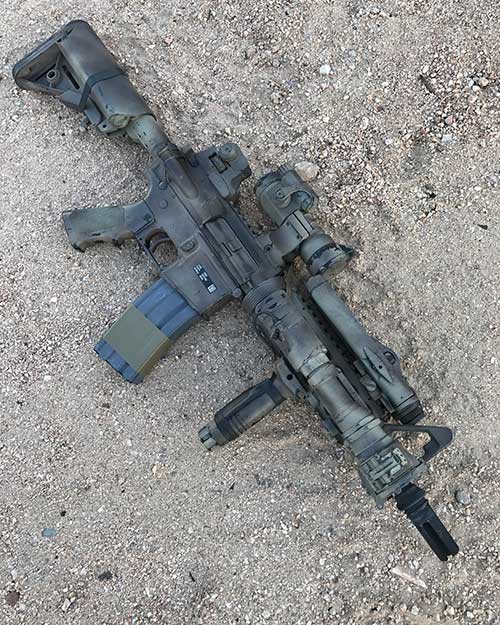
Looking for information on what a Special Forces Soldier carried during the initial invasion of Afghanistan and want to compare that to what a SEAL Team member is carrying now in Afghanistan? Chances are you can find Cloners who have made period-correct copies of those carbines.
BUILDING A CLONE
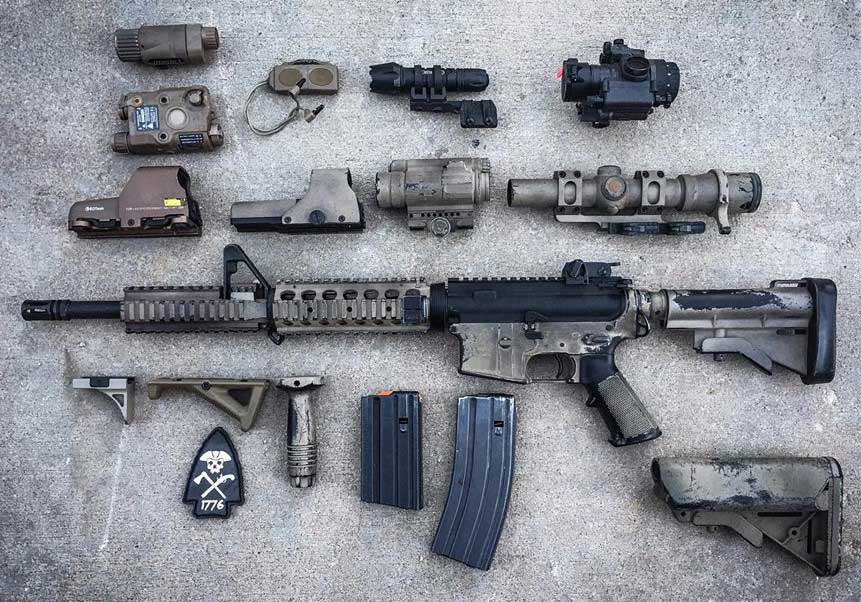
Looking at tons of cloned rifle pics online during my SOPMOD research inspired me to want to make a clone myself. Even though I had spent most of my life in the military, I did not have any rifles that resembled any of the ones I carried during my years of service. Being a competitive shooter, most of my ARs are set up more for 3-gun.
It would have been easy to build a clone of the rifle I used during my last Afghanistan deployment in 2015 because most of the accessories on the M4A1 are my personal items such as optic, grip, buttstock, rail covers, and sling. And eventually I did build a clone of this rifle, but I wanted to do a retro build for my first clone.
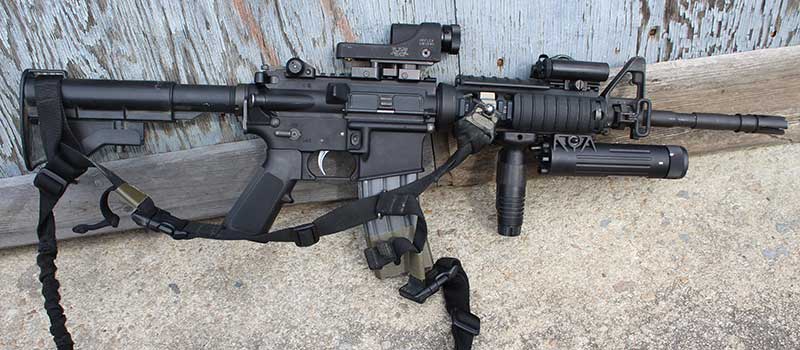
Specifically, I wanted to do a clone build of what I was issued when I was assigned to my very first Special Forces A Team back in 1998.
Although a majority of the Block I builds you see consist of ARs with EOTechs or Aimpoints and SureFire weaponlights, those items were not available as part of SOPMOD until after 2002.
Only two optic options existed in the original SOPMOD Block I kit back in 1998: a Trijicon ACOG TA01 or Trijicon Reflex sight. The only weaponlight available from the kit (aside from unit-purchased SureFire 6Ps) was the Visible Light Illuminator by Insight. So for my first build, I needed to find those items.
WHERE TO START

You can go online right now and probably find 95% of the items you would need to build a Block I or II SOPMOD clone, but it’ll cost you big time. Because Block II is still in use with Special Forces, they are super popular to build among Cloners. This has created high demand for authentic Block II items and has, of course, driven prices up to a premium.
As an example, the SOPMOD Block II Insight WMX200 weaponlight retails for just over $500. Due to not being regularly sold on the civilian market, when used ones do pop up for sale, they can go for close to double the retail (just over $900) among Cloners. That is a crazy amount if you consider you can get other weaponlights with basically the same features and even more lumen output from other manufacturers for about $250.
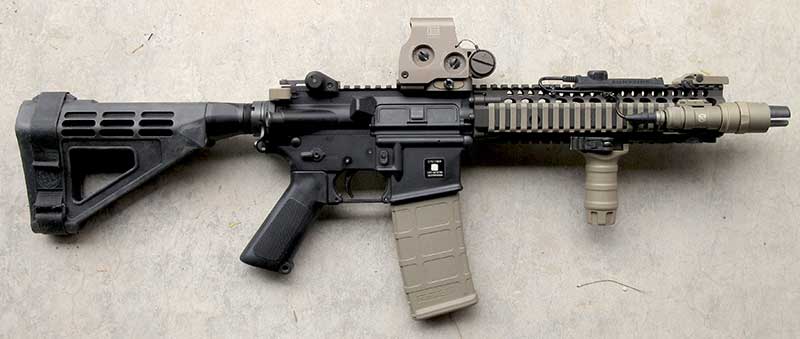
While demand for Block I is not as high, because some items are not made anymore, finding them can be tough—and expensive. Buying used, no matter which SOPMOD Block you are going for, is a great idea, but knowing where to look and what a good deal is can be tricky if you are like me and new to the whole clone thing.
During the just over two months it took me to find all the parts for my Block I clone, I learned the methods most Cloners use to get the right items at the best prices. Here are some tips that can reduce the cost of building a clone.
TIP 1: GO ONLINE
Many major gun forums, such as AR15.com and M4carbine.net, have dedicated clone threads covering every version of the M4 and SOPMOD Block 1 and SOPMOD Block 2. These forums are a wealth of information and great places to find parts and accessories, as most of these sites also have exchanges where one can buy, sell, and trade parts.
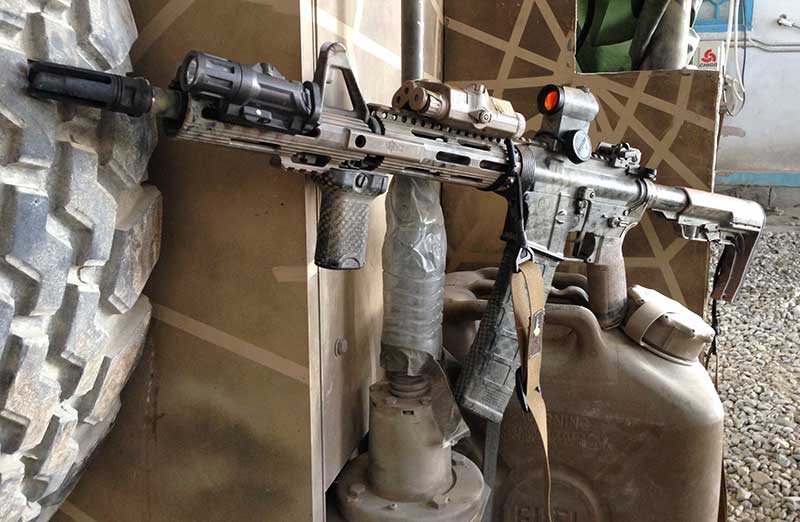
There are also numerous Facebook groups run by Cloners, where not only can you see pics and specs from other Cloners’ builds but also buy, sell, and trade parts and accessories.
TIP 2: BE PATIENT
Do not purchase the first items you see. If you really want to save some cash, take the time to learn the average prices items are going for, then look for the cheapest. I spent about two weeks going through the various online equipment exchanges to learn the average prices items sell for before buying anything.

This will help you not over pay for an item, but even better, will save you money if you can get it on the cheap. It took me almost two months to find one Block I item at a price I was willing to pay. But my patience did pay off, and in the end I saved almost $100 off the price that item usually sells for.
TIP 3: FLIP IT
If you do come across items cheaper than the norm, buy more than one. For example, although I needed only one Knight’s Armament rail system for my clone build, when I came across another really cheap one, I purchased it. I later resold it online for the price it usually sells for, making a profit.

I was able to do this a few times, investing in parts I did not need but knew I could resell for the average price, allowing me to put the money I made toward parts I still needed for my clone build.
TIP 4: DON’T FORGET BRICK AND MORTAR
While shopping online is easy, and you can certainly find some great deals if you follow Tips 1 and 2, one of the best deals I was able to get on a part was at a good old-fashioned pawn shop. No pawn shops where you live? Many gun stores have miscellaneous parts bins where you can find deals on used parts and accessories.
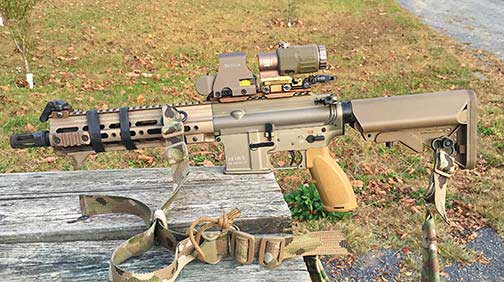
Remembering Tip 3, even if you can’t find what you need for your build, you might find gun parts and accessories you can resell or trade toward getting the parts you do need.
As previously mentioned, it took me just over two months to find everything I wanted for my early Block I clone. Not counting the AR itself, it cost just over $700 for the SOPMOD I items: optic, light, rail system, PEQ 5 red dot laser, and backup iron sights.
Buying used and shopping around, I saved about $200 over purchasing new. Even better was that, by buying and selling stuff I did not need but that I knew was in demand by other Cloners, the real cost to me was just over $200 to put it all together.
While my intent was just to build a clone of my original-issue SOPMOD-equipped M4A1 from 1998, during my search for Block I parts, I came across such a good deal on a SOPMOD Block II RIS II rail that I could not pass up purchasing it, and then also building a clone of the rifle from my last tour in Afghanistan from 2015.
Seeing as I already owned all the accessories, including the optic—a Trijicon VCOG I had purchased specifically to use on deployment—the Daniel Defense RIS II FSP rail was all I needed.
TIME PERIODS
When deciding on a clone to build, it all comes down to what time period one is looking for. Invasion of Afghanistan and Iraq up to 2007ish is SOPMOD Block I era. A build needs to have either a Knight’s Armament RAS or RIS carbine-length rail. In 2007, Block II started to be issued and is still currently in use. That requires a Daniel Defense RIS II rail with or without the front sight post cut out.
I point this out because the forearm (rail) is the base of the SOPMOD platform. From there, one can add the rest of the SOPMOD-correct items that go with that specific block. If you are unsure and don’t want to dive right in searching online gun forums, just Internet search “SOPMOD Block Charts.” Official Department of Defense SOPMOD Block I and II charts will appear, showing exactly what items are Block I and II.
There is also a Block 1.5 period, that is an AR outfitted with a Block I Knight’s Armament RAS or RIS rail but Block II accessories. The reason? While Block II optics and accessories such as lights and laser came out in 2007, the Daniel Defense RIS II rail did not get issued to most of SOF until about 2014. So for a few years the common set-up was an M4 equipped with the older Block I rail, but the other items were all Block II.
You also have the option of going shorty. The 10.3-inch barreled MK18 CQBR (Close Quarter Battle Receiver) carbines are also very popular among Cloners. If you live in a state that does not allow short-barreled rifles or if you just don’t feel like going through the hassle and cost of a tax stamp, using an arm brace over a stock and building an MK18 pistol is considered an acceptable alternative by Cloners.
Looking for something even more specialized and unique to build a clone of? There is also the MK12 Special Purpose Rifle. It was first issued to SOF around 2000 and later in very limited numbers to the regular military, then discontinued by the military about ten years ago. The very limited issue and rather short operational service life make it highly collectible among Cloners to have an AR with all authentic MK12 parts.
Cloners can build three MK12 variants: the original MOD 0 used by SOF during the early years in Afghanistan; the MOD 1, which was adopted by regular Army; and the shorty version, the “Holland,” which was used exclusively by 5th Special Forces Group during the early years in both Iraq and Afghanistan.
FUTURE OF CLONING
In 2017, in addition to the solicitation for a new 1-6X optic for the M4, Special Operations Command also announced the possibility of going to a new and improved upper receiver group (URG-I). That may include a new M-LOK style rail, flash hider, and mid-length gas system. This, along with recent photos of SOF troops in combat using M4A1s with Geissele M-LOK rails and Vortex 1-6X scopes appearing online, has already made an impression with Cloners resulting in URG-I or Block III clones already being built.
Like the past carbines and rifles utilized by our soldiers downrange, whatever they use in the future will be well documented and captured in exact detail by AR enthusiasts who go to great lengths to build period-correct clones of the tools of the trade our soldiers employ to keep themselves on top against the enemy.
If you’re looking for a project, I recommend building your own clone of a military-issued rifle or carbine. Regardless if you go retro with an early Block I or a current Block II model being used by our troops overseas, transforming an AR into a clone of a military gun is both challenging and fun.
The reward is being able to own and shoot at the range an almost exact copy of the rifles and carbines used by our Nation’s finest.
Jeff Gurwitch is a retired Special Forces Soldier who served 26 years in the United States Army (18 years with Special Forces). He served in the First Gulf War, three tours OIF, and three tours OEF. He is an avid competitive shooter, competing in USPSA, IDPA, and 3-Gun matches.


